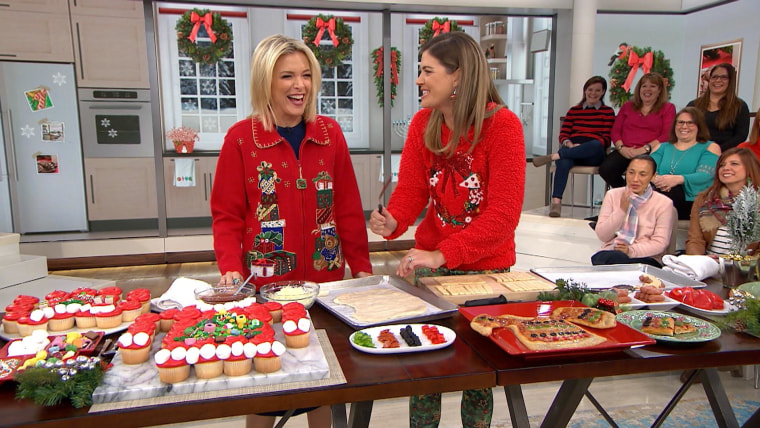How to Make and Transport a Cheese Board
Holiday parties are upon us and while it can be stressful to think about menu-planning for a large crowd, you can never go wrong with a great cheese board.
But good cheese can be incredibly expensive and if you've already blown your budget on booze, décor and other appetizers, you may be wondering if you can get by with serving a few slices of American cheese. Fret not, party planners. Here are some of our favorite tips and tricks to buying the best cheese on a budget and how to stretch each wedge for a larger crowd.

Cheese board 101
Whatever your budget may be, there are some basic rules for putting a cheese board together. Many hosts think that a well-rounded cheese board should always include one hard, one soft and one semi-soft cheese, but Jason Sobocinski, owner of Caseus Fromagerie Bistro in New Haven, Connecticut, says you don't necessarily need to buy a bunch of different cheeses to make a big impression.
"You can be very impactful by presenting one really nice cheese that's perfectly paired up with a wine, beer or even a jam," Sobocinski told TODAY Food. If you do want to serve multiple types of cheese, the cheesemonger recommends offering types made from various types of milk, so that goat, cow and sheep's milk cheeses are all represented on your board.
And how much is enough? Sobocinski suggests customers buy a total of three ounces of cheese per guest. So, if you're serving three different types of cheese and have 12 guests coming over, you should buy 12 ounces of each cheese to make sure everyone can get a taste of each type. If you're serving other appetizers, one or two ounces of cheese should be sufficient.
How to make any cheese taste better
So you can't afford the super fancy fromage but don't worry: Nearly any cheese can be improved with a few simple prep steps.
1. Let it warm up.
Regardless of price, any cheese that has just come from the refrigerator needs to warm up to room temperature before its true flavors are revealed. The trick is to let it warm up without drying out. Sobocinski suggests taking cheeses out of the refrigerator about an hour before serving them and then cover your pieces of cheese with a bowl so they can "breathe" without starting to collect moisture on their surface. And while pre-cutting slices may make the cheese easier for certain guests to handle, it will just dry it out faster and make some pieces inedible.
2. Add accessories.
Another trick for making the most of your cheese is to fill your board with lots of complimentary extras. Jimmy Kennedy, the chef at Cabot, recommends filling out your board with different types of bread, fresh fruit and vegetables, crackers, pickled veggies, olives, charcuterie and condiments like whole grain mustard, sweet jam and honey. Kennedy emphasizes that the cheese should always take center stage, but tasty additions can "help enhance the flavor and appearance of a lesser quality cheese."
3. Play up the positive.
Cathy Strange, the executive coordinator of Whole Foods Market's specialty team, says dressing up your board also helps to dress up the cheese. In addition to serving various accompanying items, Strange recommends serving your cheese with nuts that have skins still intact, such as walnuts or almonds. "The bitterness in the skin brings out the cream of the cheese," she said. And while it's nice to offer guests a variety of items to pair with the cheese, Strange cautions against going overboard: you want your cheese board to look inviting, not cluttered.
4. Use the right tools.
All three experts advised to serve cheeses with small, sharp knives for hard cheese and spreaders for soft cheese. Sobocinski says to skip the cheese plane because guests need to pick up the entire hunk of cheese to use it, which can lead to lots of unnecessary man-handling of the food and and may increase the spread of germs.
Best budget cheeses
A great goat.
Sobocinski recommends Pico, which is a soft, French goat cheese from the Perigord region with a creamy, aromatic interior. It comes in a round box, often wooden, box and will cost you about $8 for 3.5 ounces.
Blue on a budget.
Blue cheese lovers should look for La Fourme d'Ambert, which costs about $15 per pound. Sobocinski describes this cow's milk cheese as a "fudgy" blue that offers a ton of funky, earthy flavor for the price.

Youthful delights.
Cheeses like Manchego, Gouda, Gruyere and cheddar, can be aged anywhere from three months to four years so the flavor can vary wildly. In general, the longer a cheese is aged, the more expensive it is, simply because more time and effort has gone into the cheesemaking process. Cheese that has been aged longer has less moisture (it will be harder like a nice Parmesan) and will have a bolder, nuttier taste, explains Kennedy.
But that doesn't mean the younger version won't be delicious. If you love Manchego, for example, but can't afford one that's been cellar aged for six months (and may be as pricey as $25 a pound) try a younger version: A Manchego that's been aged for about three months will likely set you back just $15 a pound.
The shining star.
If you want to stick to one basic, high-end cheese, opt for a versatile crowd-pleaser: Beemster Classic Gouda, a Dutch cow's milk cheese. Sobocinski describes it as robust, nutty and sweet. It comes in a giant round, but just buy as much as you need at your local supermarket or cheesemonger. The 18-month aged version is about $25 a pound. Another great aspect of this cheese is that pairs just as well with a hoppy IPA beer as it does with a full-bodied white wine.
No matter how you slice it, plenty of party people love cheese and will be simply impressed that you took the time to arrange a few selections just for them — and there's no need to dish on how much money you saved!
Frances Largeman-Roth, RDN, is a nutrition expert, writer, mom of three and best-selling author. Her books include "Feed the Belly," "The CarbLovers Diet," and "Eating in Color." Follow her @FrancesLRothRD and check out her website.
How to Make and Transport a Cheese Board
Source: https://www.today.com/food/best-budget-cheeses-holiday-cheese-board-t119576